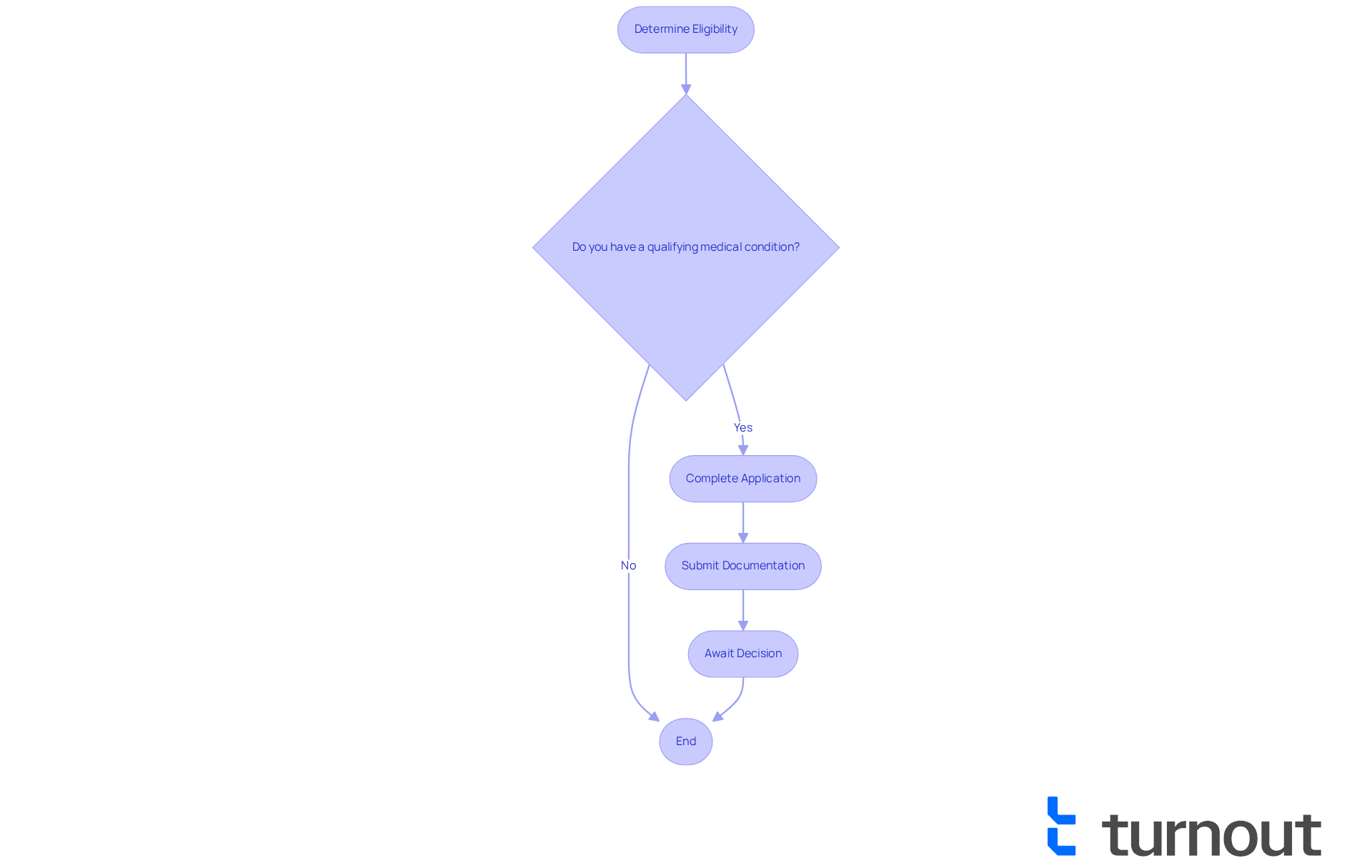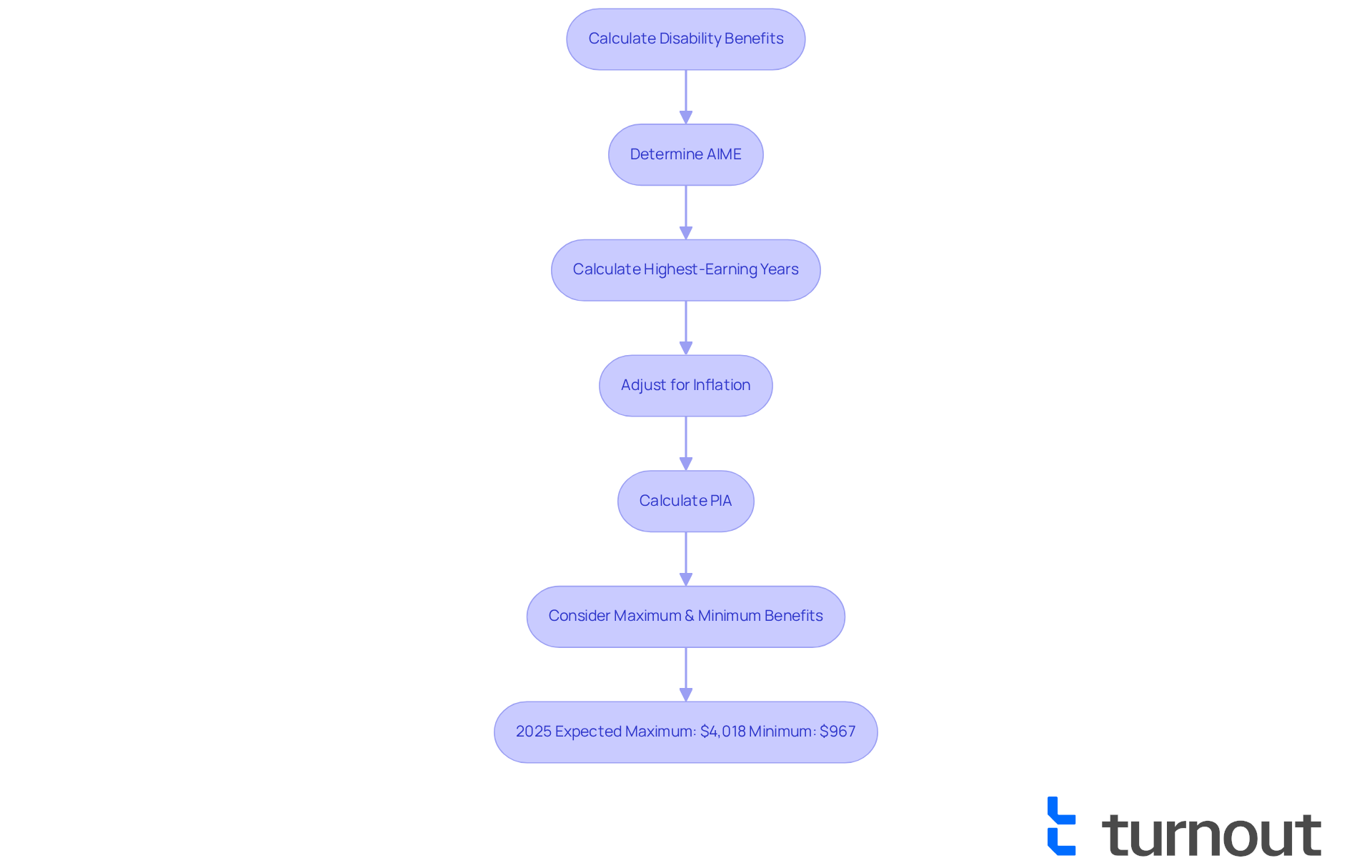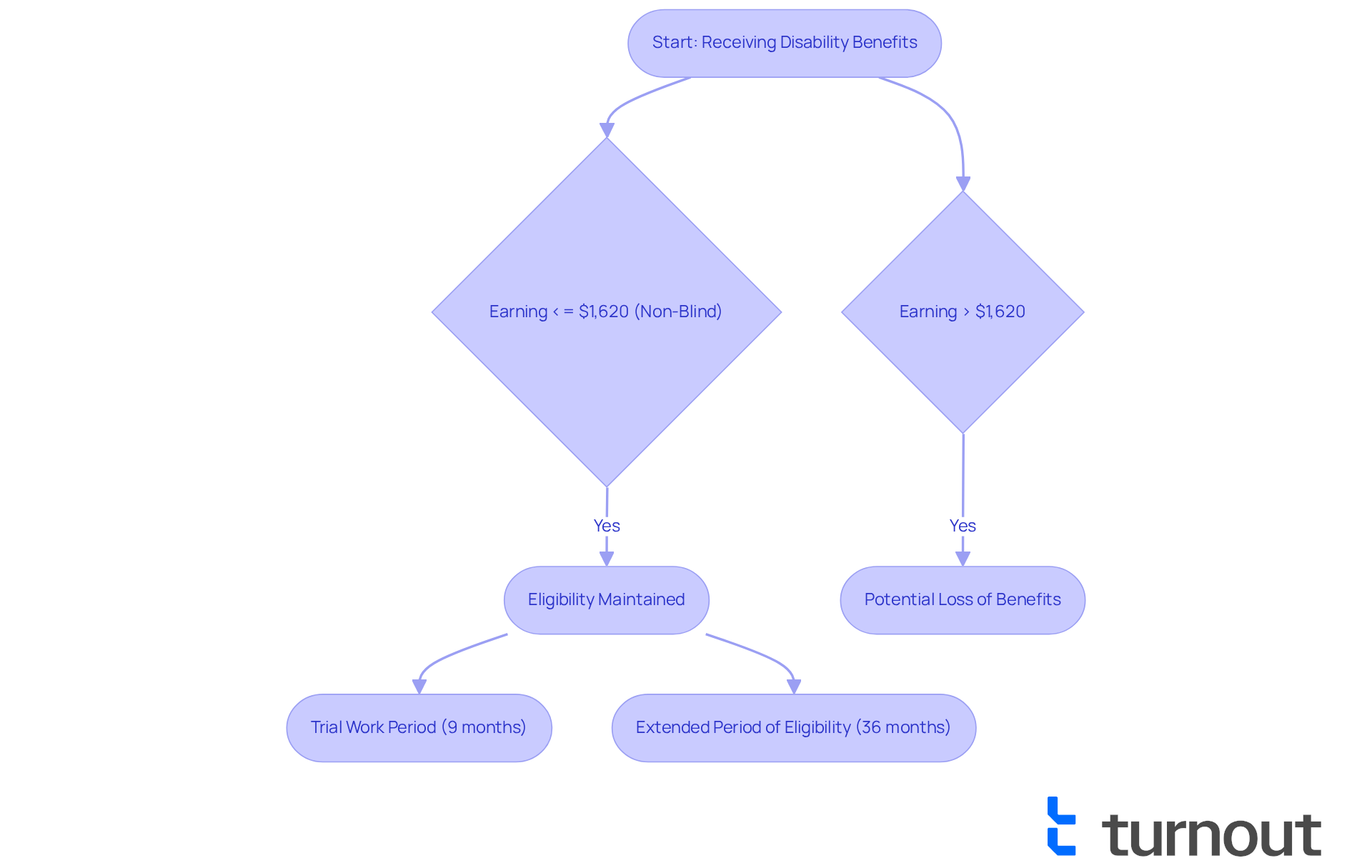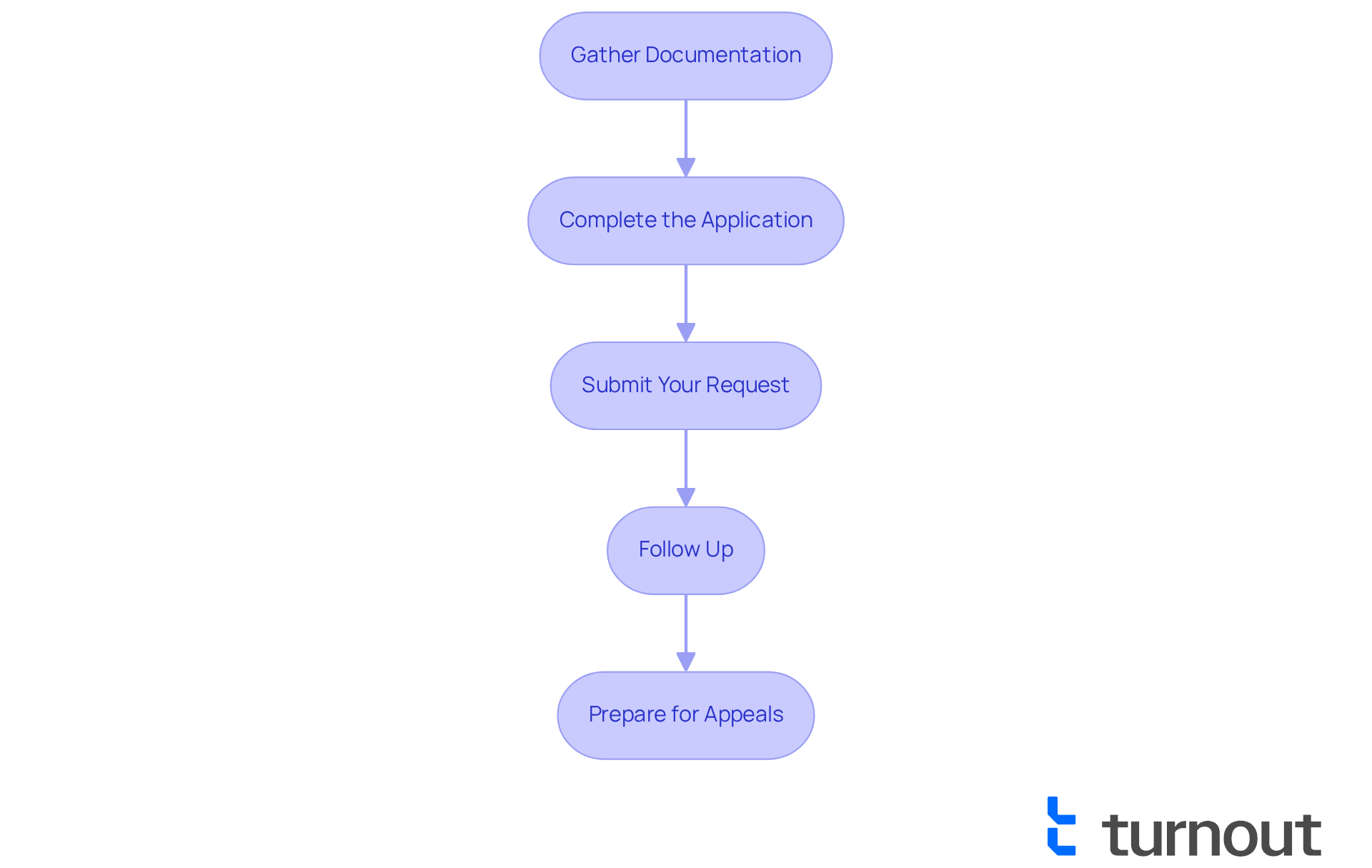Overview
Disability social security benefits are a vital lifeline for individuals who are unable to work due to qualifying disabilities. On average, these benefits provide $1,537.13 each month, with the maximum expected amount for 2025 reaching $4,018. We understand that navigating this process can be overwhelming.
It's essential to grasp the eligibility criteria and how benefits are calculated based on your lifetime earnings. Knowing the application process is crucial to ensure you receive the assistance you need efficiently. You're not alone in this journey; many have faced similar challenges and found their way through.
We encourage you to take the first step in understanding your options. Remember, we’re here to help you every step of the way. Your well-being is important, and accessing these benefits can provide the support you deserve.
Introduction
Understanding the intricacies of Social Security Disability Benefits is essential for millions of Americans navigating the complexities of financial support due to disabilities. We understand that this journey can be overwhelming.
With an estimated 8.7 million individuals expected to qualify for these benefits by 2025, grasping eligibility criteria, benefit amounts, and the application process is crucial. It's common to feel lost in the details of the system.
What are the key factors that influence benefit amounts?
How can one effectively maneuver through the application maze?
This article aims to demystify the process, offering clarity and guidance for those seeking the assistance they deserve. Remember, you are not alone in this journey; we’re here to help.
Explore the Basics of Social Security Disability Benefits
The disability social security benefits amount provides vital financial assistance to individuals unable to work due to a qualifying disability. We understand that navigating this process can be overwhelming. To qualify, applicants must have a medical condition that significantly impairs their ability to perform basic work activities. The Social Security Administration (SSA) defines disability as the inability to engage in any substantial gainful activity due to a medically determinable physical or mental impairment expected to last at least 12 months or result in death. Grasping these fundamentals is crucial for anyone considering assistance, as it lays the groundwork for managing the more intricate elements of the program.
In 2025, approximately 8.7 million Americans are anticipated to meet the criteria for SSDI, highlighting the ongoing need for these support programs. Recent updates to the SSA's definitions of disability aim to enhance the assessment process, ensuring that those genuinely in need receive support while addressing potential fraud. For instance, the SSA is considering revisions that may lead to more frequent Continuing Disability Reviews (CDRs), classifying more cases under 'medical improvement likely' or 'medical improvement expected.'
In 2023, 523,834 awards were granted to disabled workers, accounting for 89 percent of all awards to disabled beneficiaries, which totaled 591,687. This underscores the importance of being well-informed regarding the procedure and eligibility criteria. The average monthly disability social security benefits amount received by disabled beneficiaries was $1,537.13, providing a tangible understanding of the financial support available through SSDI.
Turnout plays a crucial role in helping individuals navigate these complexities without the need for legal representation. It’s important to note that Turnout is not a law firm and does not provide legal advice. By employing trained nonlegal advocates, Turnout assists clients in comprehending the SSDI submission process and eligibility criteria, ensuring they possess the essential information to prevent delays or denials. Advocates emphasize that understanding these fundamentals is vital for navigating the complexities of the SSDI program. As one advocate noted, "Ability is what you’re capable of doing. Motivation determines what you do. Attitude determines how well you do it." Additionally, the American Disability Action Group stresses the importance of accurate information to avoid delays or denials in the application process. This perspective encourages individuals to focus on their strengths and the potential for success within the SSDI framework.

Understand How Benefit Amounts Are Calculated
Navigating the world of Security Disability Benefits can be overwhelming. The amount of disability social security benefits you may receive is primarily influenced by your average indexed monthly earnings (AIME) throughout your working life. The Social Security Administration (SSA) uses a formula that evaluates your highest-earning years, adjusting these figures for inflation to calculate your Primary Insurance Amount (PIA). Generally, the more you contribute to Social Security through payroll taxes, the larger your potential disability social security benefits amount will be.
However, it’s important to be aware that there are maximum limits on the disability social security benefits amount, which are updated annually. For 2025, the disability social security benefits amount is expected to reach a maximum of $4,018 per month, while the minimum will be $967. Additionally, a 3.2% cost-of-living adjustment (COLA) is anticipated for 2025. Understanding this calculation is vital for evaluating your potential benefits and planning your financial future effectively.
We understand that this can feel daunting. Financial consultants recommend reviewing your income history and utilizing SSA resources to grasp your expected benefits, especially in light of recent adjustments to SSDI compensation calculations. By staying informed about these factors, you can better navigate the complexities of the Social Security system and ensure you receive the support you deserve.
At Turnout, we're here to help simplify access to these resources. We offer tools and services designed to assist you in navigating the SSD claims process. Our trained nonlawyer advocates are dedicated to supporting you, ensuring you understand your options without the need for legal representation. You are not alone in this journey.

Examine Income Effects on Disability Benefits
When receiving disability social security benefits amount, it's important to understand that your ability to earn additional income is subject to specific limits set by the Social Security Administration (SSA). The Substantial Gainful Activity (SGA) threshold outlines the highest disability social security benefits amount you can earn while still being eligible for assistance. For 2025, this threshold is projected to be $1,620 for non-blind individuals and $2,700 for those who are statutorily blind. Surpassing these limits may lead to a decrease or cancellation of your support.
At Turnout, we want you to know that we are not a law firm and do not provide legal advice. Instead, we utilize trained nonlawyer advocates who are here to assist you with your SSD claims. The SSA offers work incentives designed to support beneficiaries in their transition back to work. One such incentive is the Trial Work Period (TWP), which allows individuals to work for up to nine months while still receiving full support, regardless of their earnings. In 2025, any month in which you earn over $1,110 counts as a trial work month, affecting your disability social security benefits amount. After the TWP, beneficiaries enter a 36-month Extended Period of Eligibility (EPE), during which they can continue receiving the disability social security benefits amount if their earnings remain below the SGA threshold.
Real-world examples can help illustrate how beneficiaries manage their income while receiving SSDI. For instance, an individual earning $1,600 each month would have a countable income of $757.50 after considering exclusions, allowing them to retain certain advantages. Furthermore, individuals can deduct Impairment-Related Work Expenses (IRWEs) from their earnings, such as a $200 monthly transportation expense, which can further aid in complying with SGA limits.
Disability rights advocates emphasize the importance of understanding these thresholds. As one supporter noted, "Navigating the complexities of SGA is crucial for safeguarding advantages while exploring work opportunities." We understand that staying informed about the SGA limits and utilizing available work incentives can significantly impact your financial health and overall well-being as you manage the disability social security benefits amount. Remember, you are not alone in this journey, and Turnout is here to assist you every step of the way.

Navigate the Application Process for Disability Benefits
Navigating the application process for [Social Security Disability Benefits](https://myturnout.com/service/social-security-disability) can feel overwhelming, but we're here to help. By following these key steps, you can approach this journey with greater confidence:
- Gather Documentation: Start by collecting all necessary medical records, work history, and personal identification documents. It's crucial to include detailed medical reports from healthcare providers that outline your disability, as these will substantiate your claim and provide the support you need.
- Complete the Application: You have options to apply online, by phone, or in person at your local SSA office. Ensure that all information is precise and thorough to prevent delays; incomplete submissions are a common hurdle that can lead to denials. Remember, taking your time here is important.
- Submit Your Request: Once you've completed the form, send it along with all supporting documents. In 2025, the SSA plans to implement a new digital claims system aimed at speeding up processing times, potentially reducing initial decisions by up to 45 days. This change could bring some relief to many applicants.
- Follow Up: After submission, it's essential to monitor your status and respond quickly to any inquiries for further details from the SSA. We understand that this can be a stressful time, but remaining proactive can greatly influence the efficiency of your application.
- Prepare for Appeals: If your request is denied, don’t be discouraged. It's common for initial requests to be rejected, and understanding the appeals process is crucial. The SSA maintains a four-level appeals structure, and many applicants successfully navigate this path with the right documentation and support.
By adhering to these steps, you can manage the application process more efficiently and enhance your likelihood of obtaining the assistance you deserve. Real-life examples, such as those shared by families who successfully obtained benefits through diligent documentation and communication, highlight the importance of thorough preparation in achieving favorable outcomes. Remember, you are not alone in this journey, and with the right support, you can find the help you need.

Conclusion
Understanding the intricacies of Social Security Disability Benefits is crucial for those seeking financial assistance due to qualifying disabilities. We recognize that navigating this system can be overwhelming. This article highlights the importance of knowing eligibility criteria, benefit calculations, and the application process. By grasping these concepts, you can better navigate the complexities of the Social Security system and secure the support you need.
Key points discussed include:
- The criteria for qualifying as disabled
- The impact of earnings on benefit amounts
- The specific steps required to apply successfully
It's common to feel uncertain about these processes. The anticipated changes in benefit amounts and the SSA's ongoing efforts to streamline the application process further emphasize the need to stay informed. Understanding the calculations behind benefits, such as the AIME and SGA thresholds, empowers you to make informed decisions about your financial future.
Ultimately, awareness and preparation are vital in your journey to obtain Social Security Disability Benefits. Utilizing available resources, such as nonlegal advocates and SSA tools, can significantly enhance your chances of a successful application. Remember, you are not alone in this journey. As you navigate this path, we encourage you to remain proactive and informed, ensuring you receive the support that is rightfully yours.
Frequently Asked Questions
What are Social Security Disability Benefits?
Social Security Disability Benefits provide financial assistance to individuals who are unable to work due to a qualifying disability.
What qualifies as a disability under the Social Security Administration (SSA)?
The SSA defines disability as the inability to engage in substantial gainful activity due to a medically determinable physical or mental impairment that is expected to last at least 12 months or result in death.
How many Americans are expected to qualify for SSDI in 2025?
Approximately 8.7 million Americans are anticipated to meet the criteria for SSDI in 2025.
What recent updates have been made to the SSA's definitions of disability?
The SSA is considering revisions that may lead to more frequent Continuing Disability Reviews (CDRs) and may classify more cases under 'medical improvement likely' or 'medical improvement expected.'
How many awards were granted to disabled workers in 2023?
In 2023, 523,834 awards were granted to disabled workers, which accounted for 89 percent of all awards to disabled beneficiaries.
What is the average monthly benefit amount for disabled beneficiaries?
The average monthly disability social security benefits amount received by disabled beneficiaries was $1,537.13.
How can Turnout assist individuals with the SSDI process?
Turnout employs trained nonlegal advocates to help clients understand the SSDI submission process and eligibility criteria, ensuring they have the necessary information to avoid delays or denials.
Does Turnout provide legal advice?
No, Turnout is not a law firm and does not provide legal advice.
Why is it important to understand the SSDI eligibility criteria and submission process?
Understanding the eligibility criteria and submission process is vital to navigate the complexities of the SSDI program and to prevent delays or denials in applications.




